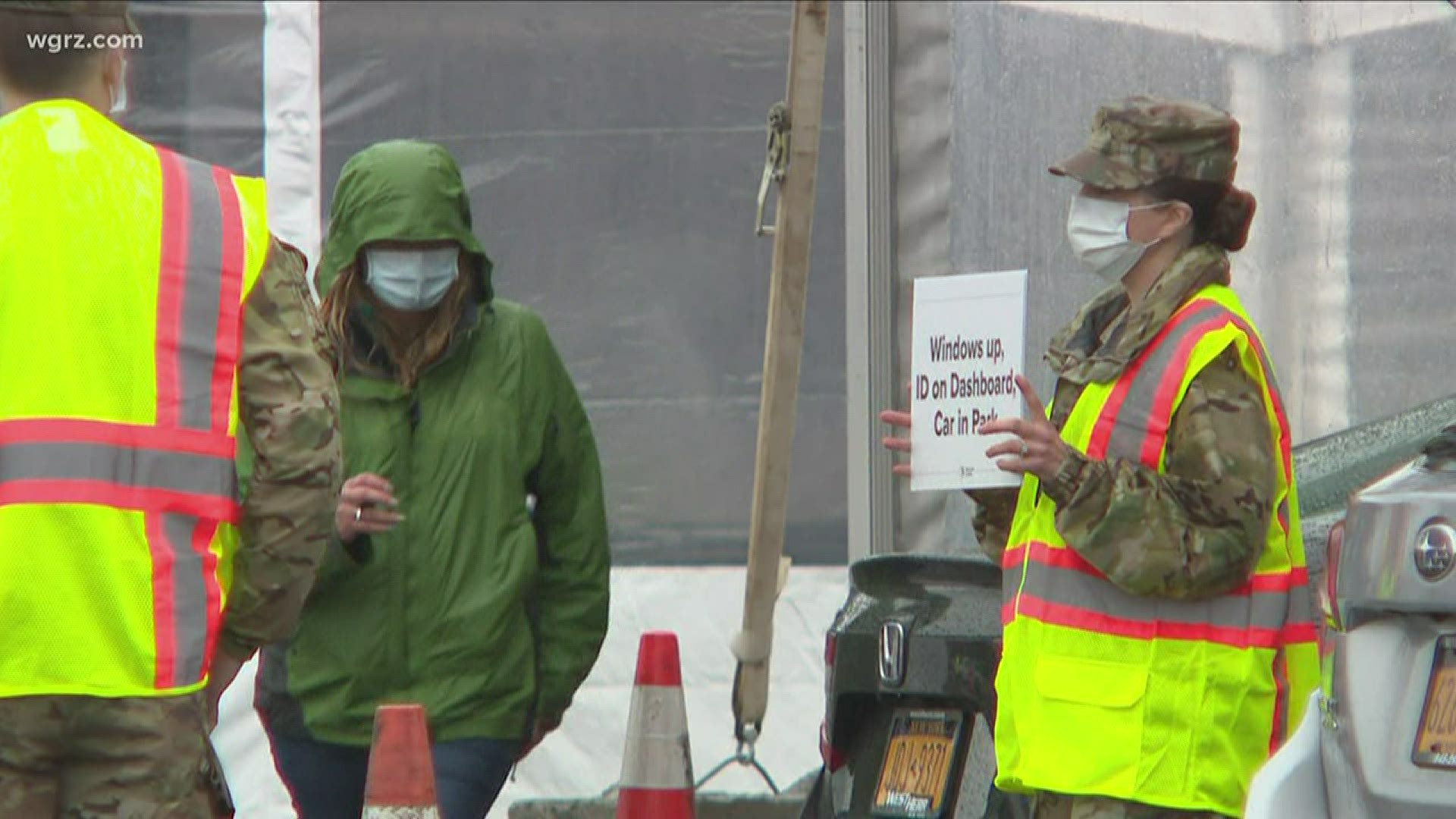BUFFALO, N.Y. — “This is the kind of stuff that we kinda have to get used to,” Dr. Peter Winkelstein said as he put on his mask during a video conference Thursday afternoon.
He donned the mask to make a point that it works to prevent the spread of COVID-19.
Winkelstein is the director of the University at Buffalo’s Institute for Healthcare Informatics. He is spearheading an effort by a team of scientists to develop computer models which project how the virus is spreading in Erie County.
“We dodged a bullet,” Winkelstein said.
Forecasted high infection rates and hospitalizations did not materialize. The so-called infection curve has been flattened.
Winkelstein credits the extraordinary efforts to sharply reduce person to person contact over the last two months.
By state order, schools have been closed. Many businesses and been idled or sharply reduced.
Social distancing has been urged constantly by elected leaders.
Gov. Andrew Cuomo has signaled that if data on the spread of the virus warrants, regions of the state could be re-opened gradually, possibly this month.
If that happens, Winkelstein says a new way of life or a “new normal” need to be embraced.
Businesses and schools will need to incorporate hand sanitizer, distancing and even masks into a new routine.
For how long?
Winkelstein says, “It probably doesn’t start to get better until we have the vaccine. And this is not my area of expertise, but in my opinion, we’ll be lucky to have the vaccine next year.”

